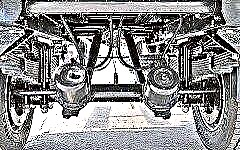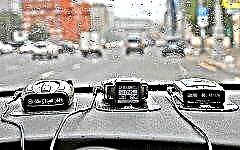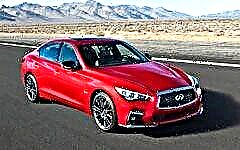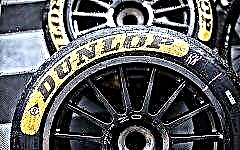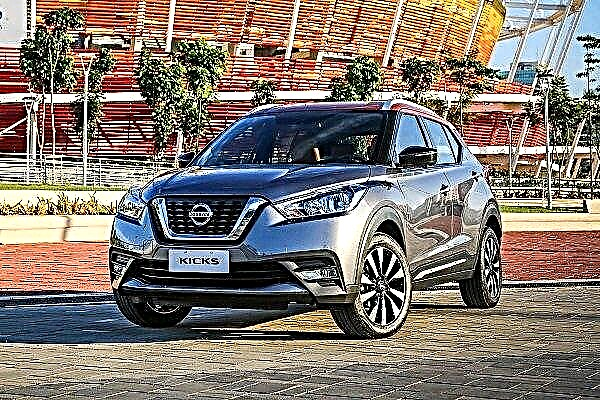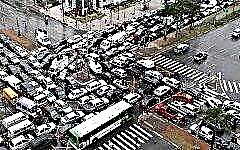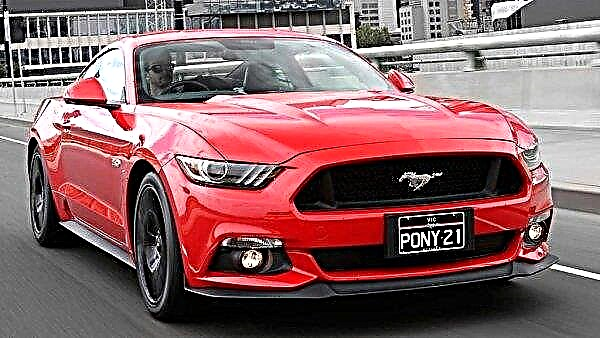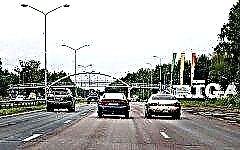

The content of the article:
- Pros of traveling by car
- Required documents for entry
- What else can be useful
- Restrictions on the import of goods and peculiarities of crossing the border
- Driving features
- Fuel cost
If you are going to look at the Baltic countries, but find that ticket prices, to put it mildly, are not cheap, auto tourism may be an excellent solution.
Traveling by car to the Baltic countries has a lot of advantages. The main thing is to know some of the "pitfalls" and features of paperwork and driving in these countries.
The Baltics are already Europe, the rules of entry and driving are about the same here, but there are still small differences. Let's talk about the main points that you should know in advance.
Pros of traveling by car

If you love car tourism, you have known these advantages for a long time:
- If you go by car not alone, but two or three, the cost of gasoline (even taking into account the depreciation of the car) will cost significantly less than purchasing tickets for transport, be it a bus, train tickets, and even more so by air.
- The car will allow you not to worry about excess baggage and liquids prohibited by air. Also, the problems of "overweight" are pushed back to the limit of baggage weight, which is critical for a particular car, and not limited to the weight agreed by the airline in the region of modest 20 kg per person.
Looking out for another purchase in a souvenir shop, you do not have to think about the question of whether you can bring it home.
- A personal car is freedom. You are not limited by time frames, you do not have to move along a predetermined trajectory, as in the case of a bus tour. Seeing on the horizon a building you like, a settlement, you can always turn off the highway and visit more interesting places. Tempting, right?
But in order for a trip by car to the Baltics to be extremely enjoyable and not to bring problems, it is worthwhile to take care of collecting information in advance. Let's start with the documents.
Required documents for entry

If you are entering the Baltic country by private car, you will need a standard set of documents.
For auto:
- registration certificate;
- international driving license;
- technical certificate;
- "green map".
The "green card" for a car is a European analogue of the Russian OSAGO insurance. A "green card" is issued in any insurance company and costs the car owner about 2.5 thousand rubles. This card can even be issued at some gas stations in the immediate vicinity of the border. This document is purchased not earlier than a month before the start of the trip. The minimum document validity period is two weeks.
If the car is older than three years old and has a Russian registration, at the border they may be required to present a diagnostic card of the car, which indicates that the car is in good working order.
Those who have recently traveled to the Baltic states note that even for a more recent car, it is better to go through unscheduled maintenance in advance. A diagnostic card at the border is asked after the tourists have received a stamp in their passport to enter the country.
If the car does not meet the serviceability requirements, they will immediately put an exit stamp at the border and send it home. If a one-time Schengen was purchased, the trip can be considered over.
A diagnostic card may be required not only at the border. According to the laws of the Baltic countries, this document can be asked to be presented by any police officer.
If your car has tinted glass, you should take care of the question of what is their light transmittance. Tinted side front windows of the car must transmit light in the volume of at least 80%. In the case of rear and rear side windows, the light transmittance of the cover may be lower. As a rule, there are no problems with factory glass tinting at the border.
Studded tires are allowed in the Baltics from the beginning of October to the end of April. If the windows of the car are cracked or there is damage on the body, the car may not be allowed at the border - according to the laws of Europe, such cars do not have the right to enter the country.
If a power of attorney is needed for a car, it must be notarized without fail.
For adult passengers:
- application with a questionnaire;
- international passport with a Schengen visa;
- certificate of income from work;
- bank confirmation that you have funds on your account;
- medical insurance;
- confirmation of hotel reservation, rent of an apartment or a guest house.
For children (in addition to the documents listed above, with the exception of a certificate from work and from a bank):
- birth certificate;
- up to 14 years old, the child's data can be entered in the passport of one of the parents;
- when a child travels without parents - own international passport with Schengen and notarized parental consent to travel abroad.
Currently, a Schengen visa can be obtained with the help of an intermediary organization. Almost all embassies will indicate which intermediary to contact. You can also go directly to the embassy - it will cost about 25 euros cheaper, but at the same time you will have to go through the queue at the consulate - two to three weeks, and then wait for the document to be produced within 10 days.
Medical insurance for entering the Baltic countries must be issued for a coverage amount of at least 30 thousand euros.
What else can be useful

In order to make the trip comfortable, it will be useful to have a navigator. Better if it is a program. Designed not only for a car, but also for pedestrian movements.
For example, Sуgic navigator he will perfectly cope with both "leading" the driver to a given destination, and will tell about the sights of the country closest to the paved route.
On a long trip it is very convenient if you can change while driving. The second driver in the company makes the journey very easy.
Restrictions on the import of goods and peculiarities of crossing the border

Photo: checkpoint on the border with Estonia
When crossing the border, car tourists will have to pay an environmental fee - about 20 euros per passenger plus the amount for the car itself.
There are restrictions on the import of a number of goods into the Baltic States, which may differ from country to country. This usually applies to cigarettes, alcoholic beverages, fuels and certain foods.
For example, more than 40 pieces of cigarettes (that is, two packs), one liter of alcohol with a strength higher than 6 degrees, or two liters of weaker alcohol such as beer, 10 liters of gasoline, as well as meat and any meat products cannot be imported into Latvia.
The use of anti-radars in the Baltics is strictly prohibited. At the entrance, such devices are likely to be taken away, or simply not allowed into the country. If the fact of the presence of these devices becomes clear already on the territory of the country, the driver will face a fine of up to 1200 euros - the amount is more than the average wage!
The time spent at the border depends on the specific border checkpoint and the type of queue. At the entrance to the Baltic States, an electronic queue is a faster way to go through control. At least it will take about forty minutes, but on average tourists say the time is up to one and a half to two hours.
In theory, you can call the border control point and inquire in advance about how long the queue is. But not the fact that you will be answered.
When leaving the country, autotourists are better off using the advance booking of the electronic queue.It should be borne in mind that in the Baltics, border guards specifically pay more attention to the electronic queue than to the “live” queue, so it makes sense to spend one and a half euros to book a place in the electronic queue, than then tell the “horrors” about a seven-hour stay at the border checkpoint.
Driving features

There are no toll roads in the Baltics, all roads for light transport are free. Similarly to most European countries, here on the roundabout the cars located at the very intersection have the advantage.
Similar to Russian regulations, in the Baltics, dipped headlights are mandatory.
Parking in cities is usually paid. They will cost from two euros per hour, but in capitals and central areas of cities they can be three times more expensive.
There is an interesting feature of parking in Tallinn: here you will need a parking clock, which can be purchased at a gas station. This watch is placed under the windshield. Payment for parking is made using SMS, if you have a SIM card of the country, or through a specialized machine.
It is better to study the speed limits in the Baltic countries in advance. So, the "fairy tale" about the slowness of the same Estonians is by no means a fairy tale if we talk about the speed limit on the roads. A car is allowed a maximum of 110 km / h and then only on specialized motorways marked with the sign "road on a blue field", and only in summer. And in the period from the beginning of November to the end of March outside the city you can move at a speed of no more than 90 km / h, in the city limits - no more than 50 km / h.
In case of speeding, you will have to fork out: exceeding up to 10 km / h can go unnoticed, but if the speedometer arrow crawled 20 km / h above the norm, this is 400 euros or a half-year deprivation of rights, 40 km / h above the upper limit - 800 euros and annual deprivation of rights, 60 km / h "brute force" - 1200 euros and deprivation of rights for two years.
The car, as in Russian standards, must have a first aid kit, a fire extinguisher, a reflective vest and an emergency stop sign. However, the presence of a reflective vest is not strictly required, but without it, it is impossible to be on the road outside the car.
If you are stopped on the road, you cannot get out of the car: this can be interpreted as an attempt to escape. You just need to open the driver's side window and put your hands on the steering wheel. The policeman will come to you himself.
Fuel cost

Photo: gas station in Estonia
When entering the Baltics, it is better to have a full fuel tank. The distances are short here, but the fuel price is not low:
- In Estonia: 95th gasoline - from 80 rubles, diesel - from 76 rubles, gas - from 36 rubles, but there are very few gas stations here.
- In Lithuania: 95th gasoline - from 75 rubles, diesel fuel - from 66 rubles, gas - from 34 rubles, and gas stations are quite common in this country.
- In Latvia: 95th gasoline - from 78 rubles, diesel fuel - from 75 rubles, gas - from 35 rubles. In all the Baltic countries, roads are not overloaded, cars move in “sparing” traffic, so fuel consumption is quite economical.
Conclusion
In general, a trip to the Baltics by private car is an enjoyable adventure if you follow the traffic rules, are law-abiding and are willing to endure a little paperwork at the border. Happy trip!


